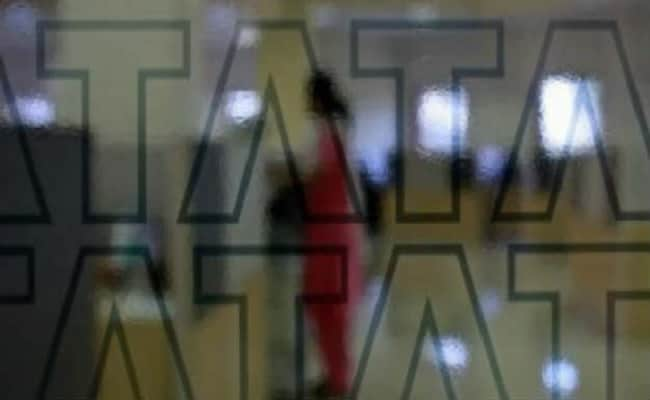The story so far: The Union Budget for 2024-25 made it clear that employment was a major priority of the government, with the word getting 23 mentions in the Finance Minister’s speech. With many voters expressing their disenchantment with rising unemployment in the recent election, Prime Minister Narendra Modi has lent his title to a package of schemes on employment.
What is the current state of employment?
According to the Economic Survey, India’s workforce was estimated to be nearly 56.5 crore in 2022-23, of which more than 45% is employed in agriculture, 11.4% in manufacturing, 28.9% in services, and 13% in construction. Officially, the unemployment rate was just 3.2% in that period, but economists note that these statistics do not reflect ground reality, given the large number of underemployed people in the country and the fact that many job seekers continue to work on farms or the unorganised retail sector or as casual labourers. A person is categorised as employed if he pursued any economic activity for at least 30 days in the preceding year.
Almost one in five people in the workforce (18.3%), mostly women, do not receive any wages for their labour, as they are unpaid workers in household enterprises. The urban unemployment rate for the quarter ending March 2024 stood at 6.7%, while youth unemployment stood at 10% in 2022-23. The percentage of people in regular salaried work has dropped from 22.8% in 2017-18 to 20.9% five years later, despite policy efforts to formalise the workforce; many salaried workers do not have access to contracts or social security benefits that usually define a formal worker. The government cites enrolment in the Employees Provident Fund Organisation (EPFO) as evidence of formalisation. The EPFO has 7.3 crore contributing subscribers, though total accounts are 30 crore, including inoperative accounts and multiple accounts held by individuals.
Watch: Budget 2024 | What is in store for labour?
What were specific schemes in the package?
Three of the schemes provide employment-linked incentives. The first scheme is meant to support the hiring of first-time employees, with a wage subsidy of up to ₹15,000 paid to the employee, and is expected to cover one crore people. The second is aimed at the hiring of first-time employees, specifically in the manufacturing sector, with wage subsidies to be paid to both employees and employers for four years, with a maximum incentive of 24% of a ₹25,000 monthly wage. The third supports employers who hire new workers, not necessarily first-timers, by reimbursing up to ₹3,000 of their monthly EPFO contribution. In fact, all three schemes are dependent on employees being registered with the EPFO. The fourth scheme aims to upgrade Industrial Training Institutes and boost skilling efforts, with 20 lakh students expected to benefit. The final scheme, which garnered headlines partly because of its similarities to a proposal in the Congress’s manifesto, is aimed at on-the-job skilling, with an ambitious target of one crore youth to be given internships in India’s top companies with a monthly allowance of ₹5,000 for one year, with the companies bearing training costs and 10% of the allowance.
What is in the fine print?
Economists and small industrialists say the conditions and procedures built into these schemes may create obstacles for effective implementation. For instance, the incentive scheme for first-time employees, which offers a ₹15,000 subsidy is paid out in three instalments; the second instalment is only payable if the employee undergoes a compulsory online financial literacy course. “This is impractical. Why should employees in every unrelated sector be expected to do this? And why should this be a condition for this incentive?” asks Himanshu, who teaches at Centre for Economic Studies and Planning, Jawaharlal Nehru University (JNU).
More worrying is the clause stating that the subsidy is “to be refunded by the employer if the employment to the first timer ends within 12 months of recruitment.” If the employee switches jobs in 10 months, he has already received the benefit of the scheme, but the employer is required to bear the costs; labour experts say few small employers will be willing to take that risk. The scheme for creating jobs in manufacturing has a minimum requirement of hiring 50 people or 25% of their existing strength, which is a significant number of people to be hired at one go for any firm in return for marginal benefits.
How effective are these schemes likely to be?
These schemes essentially attempt to encourage hiring by reducing the cost of new hires. However, economists note that this is not the main constraint preventing employers from hiring new workers. Anamitra Roychowdhury, a labour economist at JNU, notes that India is already a low wage economy, with real monthly incomes falling over the last five years for the majority of the workforce. “Wage costs are a redundant constraint,” he says, adding that while skilling is certainly needed, it is not the central issue preventing hiring either.
“There is a bigger structural reason why the economy is not able to create jobs, and that is due to insufficient demand, caused by low consumption… and the lack of private investment. And if that comes up, then these costs won’t matter,” notes Amit Basole, professor at Azim Premji University. He adds that these schemes need to be pitched to the niche group of employers for whom such costs do matter, usually small firms with small margins. In fact, Finance Secretary T.V. Somanathan indicated in an interview with The Hindu that this may have been the government’s intention behind the scheme, noting that “fiscal incentives have a role at the margin”.
Editorial | Shuffling the deck: On the Union Budget 2024-25
With regard to formalisation of the workforce, Mr. Basole points out that apart from new people entering the workforce, there are also large numbers seeking to leave agriculture, petty trade, unorganised retail and domestic service. The need is to create formal jobs to keep up with the pace of the supply, which is not happening, as evidenced by the fact that the proportion of salaried workers has actually dropped slightly over the last five years.
What else is needed to create jobs?
“When we think of where we need to create jobs, it should not be in the top 500 companies which are largely capital intensive, but in the MSME (micro, small and medium enterprises) sector, in labour intensive sectors, in small towns. The need is to raise wages there, infuse money into MSMEs, which will have a multiplier effect,” says Mr. Himanshu, recommending a bottoms-up approach. If the urgent requirement is to stimulate demand by increasing consumption, another step could be to raise wages in MGNREGA, the rural jobs scheme, and create a similar employment guarantee scheme for urban workers, says Mr. Roychowdhury. “This would be the more direct approach to kickstart consumption,” he says, noting that the Centre has instead curbed MGNREGA funding.












